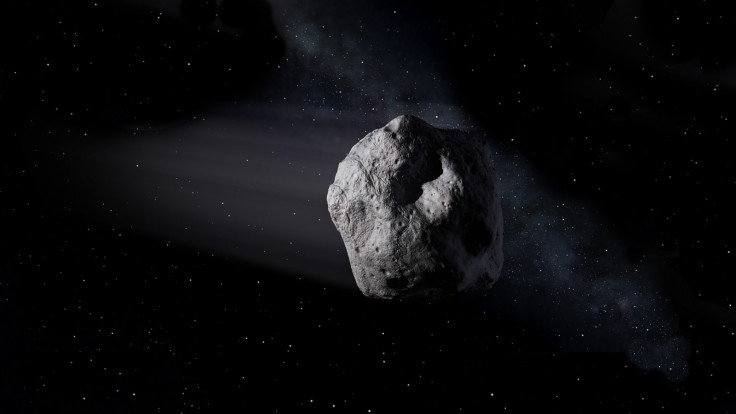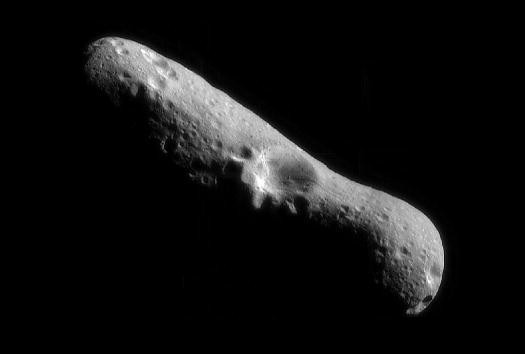Asteroids can hit Earth - here's why we should be worried
Disasters like the events at Chelyabinsk in 2013 could happen again in the future.

On Asteroid Day, news stories about asteroid impacts on Earth are likely to be commonplace.
Even without Asteroid Day, we see such news stories surprisingly regularly – it seems rare for a year to pass without hearing or reading about some future asteroid impact catastrophe. Yet we are still here. The world has not ended. Life goes on.
So, is an asteroid impact something that we really need to worry about?
The reality is that asteroid impacts on Earth do happen. Large impacts have left a crater record in landscapes all around the world. Whilst nature has hidden many of these scars, we only need to look at the Moon to see the full history of the bombardment by asteroids that also affected the Earth.
The known population of Near Earth Asteroids – numbering over 16,229 as of June 2017 – includes asteroids that could impact the Earth in the future. Many of these are large enough to devastate entire cities, counties or countries were they to hit.
The United Nations recognised the hazard posed by Near Earth Objects – asteroids and comets that approach the Earth – and formed an Action Team to investigate how we might be able to address this extra-terrestrial threat.
On 15th February 2013, members of the Action Team were meeting at the United Nations in Vienna when news came through that an asteroid had exploded high in the atmosphere above the Russian city of Chelyabinsk. Although the asteroid did not reach the ground in one piece, the explosion generated a shockwave that damaged buildings and injured more than 1000 people - curious eyewitnesses enticed by the bright fireball and smoke plume left behind by the violent explosion to observe through windows that ultimately shattered and caused injury.
The events at Chelyabinsk strengthened the opinion of the members of the United Nations Action Team that greater effort should be made to understand and prevent similar disasters in the future. As a result of the recommendations made by the Action Team, two new organisations were established: the International Asteroid Warning Network and the Space Mission Planning Advisory Group, both of which report to the United Nations.
At the heart of the activities of both organisations is the mitigation of the risk from Near Earth Objects. The International Asteroid Warning Network endeavours to identify asteroids and comets that pose a realistic threat, and it retires asteroids from the list of threats if an impact can be ruled out. If a real threat is identified, the Space Mission Planning Advisory Group provides guidance to the United Nations – and its member states – on what space missions might be used to prevent an impact.
Small asteroids are a threat
While some of the technology needed may seem like Science Fiction – "Gravity Tractor" sounds like something you would hear on an episode of "Star Trek" – it should be reassuring to learn that we already have viable technologies in place to deflect some incoming asteroids so that they miss the Earth. Unfortunately, there have been few opportunities to demonstrate these technologies on real space missions and more could be done to address this aspect.
Yet, for the first time in human history, we have the capability to prevent a natural disaster of global proportions. But is that really the case?
A closer inspection of the asteroid population reveals that the most likely impact scenario will involve a small asteroid not detected before hitting the Earth. Small asteroids are much more numerous than large asteroids and therefore hit the Earth more frequently. Indeed, satellites have recorded hundreds of asteroid explosions in the atmosphere since 1988, some with the same explosive energy as a nuclear bomb.

Asteroid survey programmes, such as the Catalina Sky Survey, and space-based detection missions such as NEO WISE, have provided us with a good knowledge of the population of large asteroids, and are making good progress on cataloguing the asteroids larger than 140 metres, but we remain very much in the dark about the smaller asteroids that can nevertheless have significant consequences if they were to hit the Earth. We need to continue to invest in search programmes and technology development if we are to do anything about this threat.
As the character Clarice Bean says in Lauren Child's novel, "Don't Look Now", the worst worry is the one you didn't even know you should be worrying about. Chelyabinsk was a timely reminder – one that will be repeated – that we should be worrying about asteroids. Even if we can't yet detect them all, at least we know the threat is real and we can push for investment and action to safeguard the planet.
Hugh Lewis is a Senior Lecturer in Aerospace Engineering and Clemens Rumpf is a Postdoctoral Research Fellow, both at the University of Southampton. They represent the United Kingdom Space Agency on the Space Mission Planning Advisory Group.
© Copyright IBTimes 2025. All rights reserved.





















